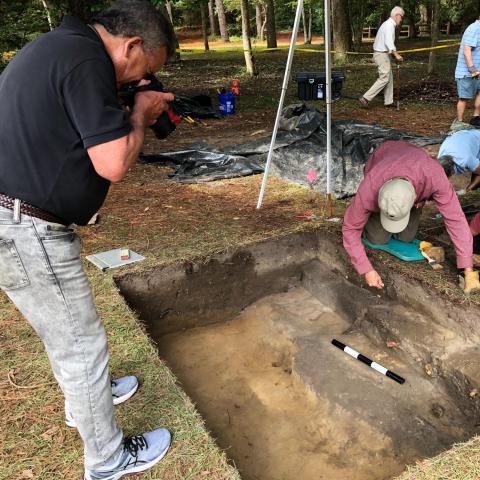
Have a safe and enjoyable visit to Cape Hatteras National Seashore this summer/NPS
With the Memorial Day Weekend, the traditional kickoff to summer, quickly approaching, staff at Cape Hatteras National Seashore on North Carolina's Outer Banks have issued some tips to help beachgoers have a safe, enjoyable visit.
The Atlantic Ocean, located off the eastern side of the Seashore, produces a number of safety challenges for underprepared visitors every year.
Rip Currents
Rip currents are powerful, channeled currents of water flowing away from shore. They typically extend from the shoreline, through the surf zone, and past the line of breaking waves. Rip currents can occur at any beach with breaking waves. If you find yourself caught in a rip current, float, don't fight.
Remain calm and swim across the current (parallel to the shore), slowly working your way back to the beach at an angle. If you are still unable to reach the beach, draw attention to yourself by waving your arms and yelling for help.
Lifeguarded Beaches
Lifeguarded beaches are by far the safest places to swim at the Seashore. There are four beach locations that are staffed with lifeguards from Memorial Day weekend through Labor Day (9 a.m.-5 p.m.). The locations of the four lifeguarded beaches are:
Coquina Beach Access (Bodie Island)
Located across from the Bodie Island Lighthouse site
Cape Hatteras Lighthouse Beach (Hatteras Island)
Adjacent to the Old Cape Hatteras Lighthouse site
NEW for 2019!
Frisco Beach Access (Hatteras Island)
Located just south of Frisco Village
Ocracoke Beach Access (Ocracoke Island)
1½ miles south of the Seashore campground or ½ mile north of Ocracoke Village
Ocean Safety Tips
Swim at beaches patrolled by lifeguards.
Bring something in the water with you that floats. Rather than struggling through a rip current and exhausting yourself, bring something into the ocean that floats and easily float away from the rip current. Float don’t fight.
Swimming in the Atlantic Ocean is not the same as swimming in a pool or a lake. Ocean swimming can be very physically taxing and may exacerbate underlying medical issues in older swimmers. The majority (90 percent) of swimming-related deaths off the seashore the last three years (2016-2018) involved males over the age of 50 years old. There were also three deaths of teenage males age 17-18. The average age of the two female victims was 71 years old.
A perfect day on the beach doesn’t always mean that it’s a perfect day in the ocean. Check the beach forecast before visiting the beach. If in doubt, don’t go out.
Never swim alone. Swim with a buddy, and have adult supervision for all children. Have someone on shore keep an eye on you while you swim/surf/wade in the water.
Remember, many people drown while trying to save someone else from a rip current. Use flotation and make safe choices.
Be aware that the ocean presents additional hazards, such as shorebreak, high surf, and longshore currents. Learn more at www.lovethebeachrespecttheocean.com.
Avoid wearing shiny objects that may attract sharks and other fish. Avoid swimming where danger is present: in rough seas; inlets; around fishing piers and surfers; at night; or during thunderstorms.
Public Outreach Facts & Figures
Park rangers provide ocean safety tips before every interpretive ranger talk at Cape Hatteras National Seashore, Fort Raleigh National Historic Site, and Wright Brothers National Memorial. In 2018, ocean safety tips were given to over 76,000 visitors at interpretive ranger talks.
There are more than 200 ocean safety-related signs along the Seashore! Please read them. The seashore posts the daily beach forecast and ocean safety information on its website and social media (Facebook and Twitter).
The seashore has partnered with Dare County and local agencies on an ocean safety awareness campaign called, “Love The Beach, Respect The Ocean.” Text “Join OBXBeachConditions” to 30890 to sign up for text alerts on beach conditions.
While on the beach, search for and use the #LoveTheBeachRespectTheOcean hashtag on social media.


 Support Essential Coverage of Essential Places
Support Essential Coverage of Essential Places







Comments
I see NOTHING here about smoking being banned in the lifeguard areas...was banned from the area between the flags last week in Frisco. What the heck?
I have been complimented on keeping my butts under control - ie pack it in pack it out...we always pick up trash...very disrespected by a young blond lady - not our normal guards...she was rude about it too